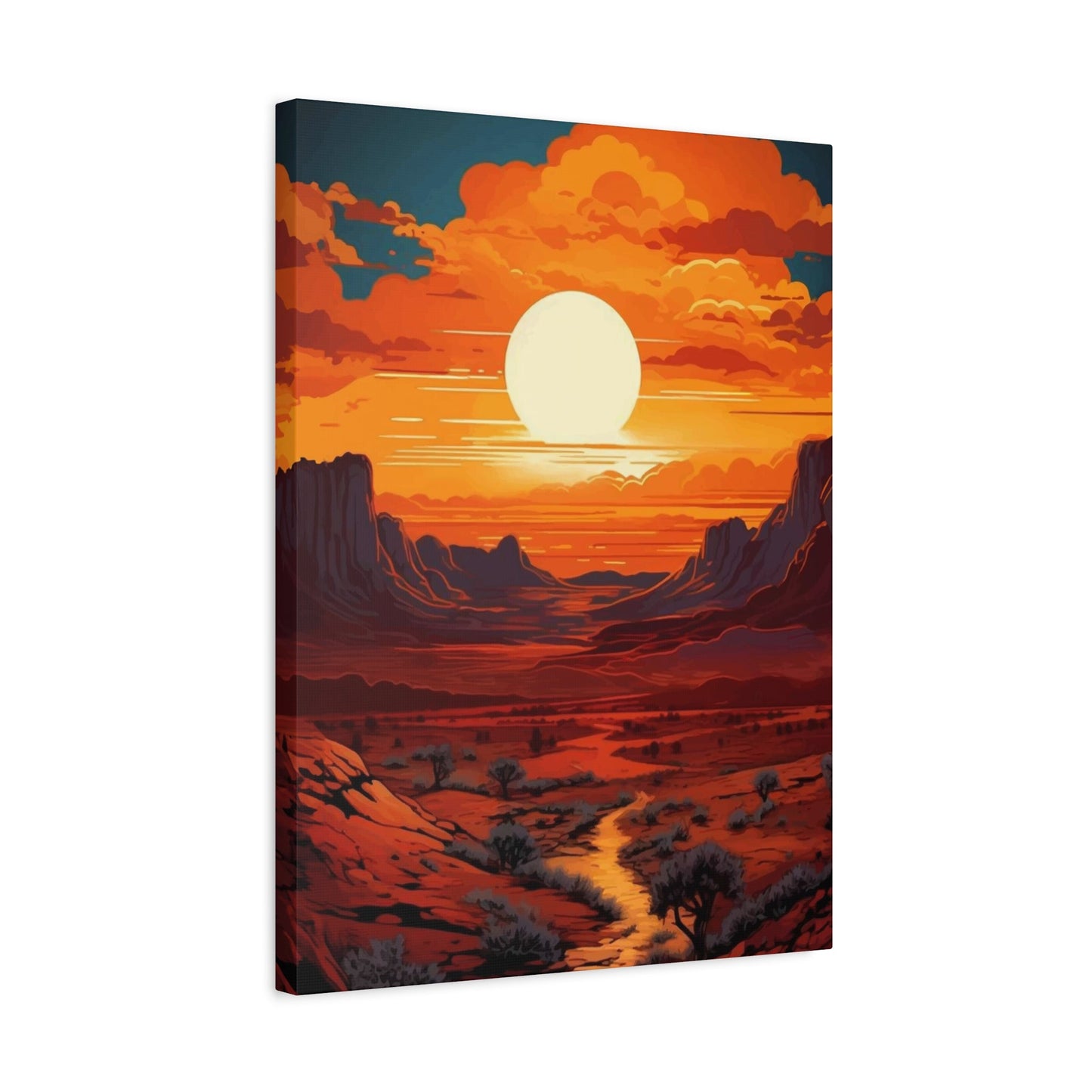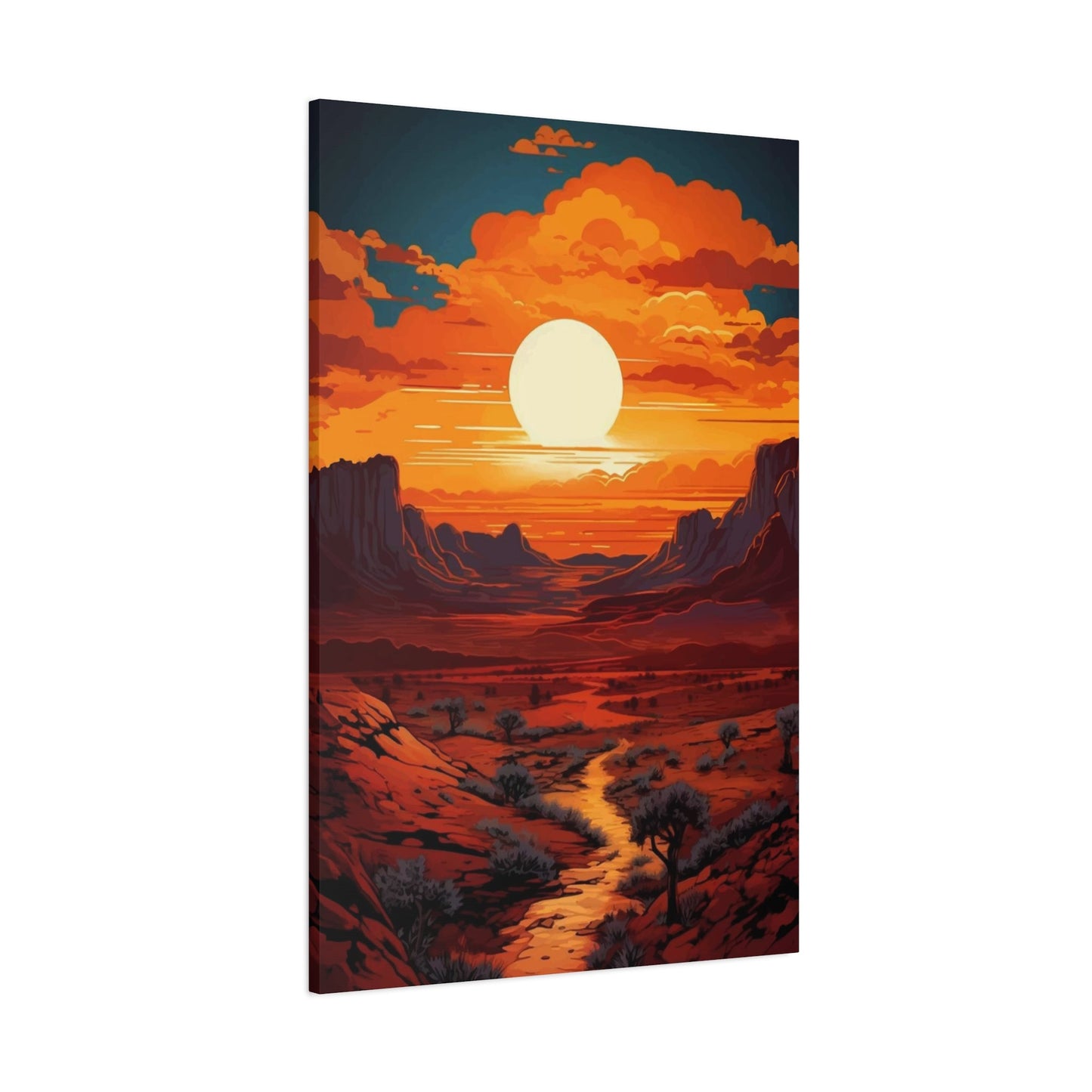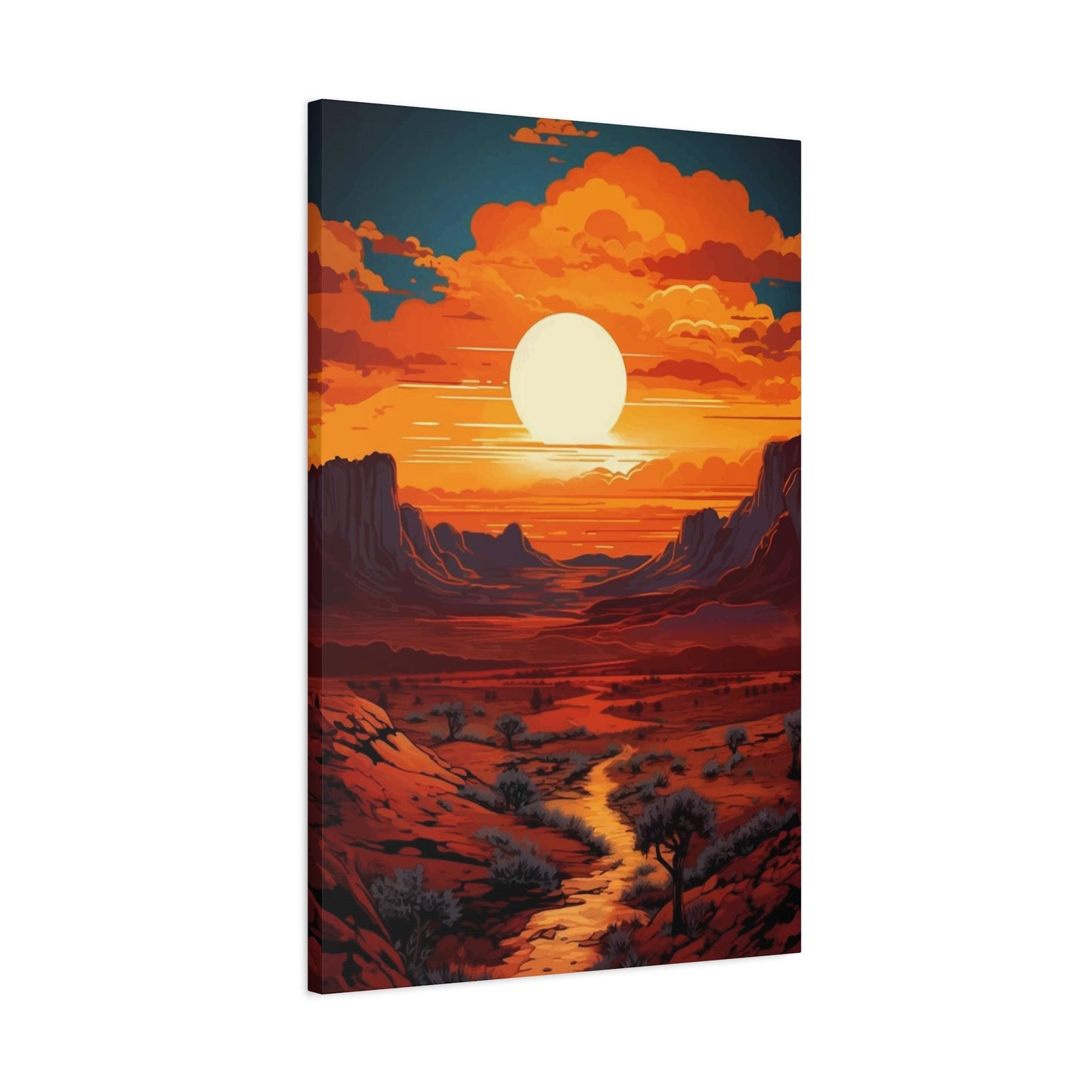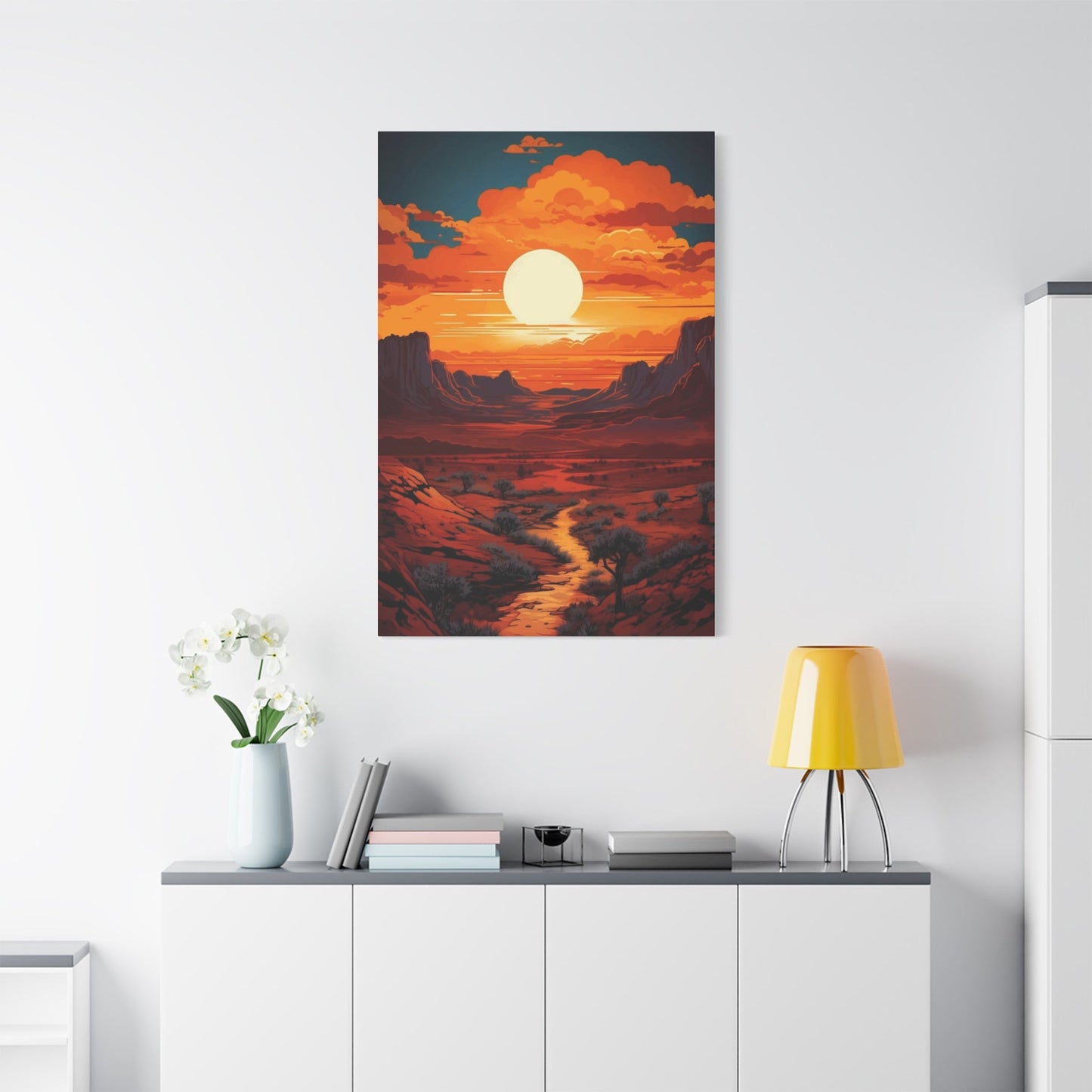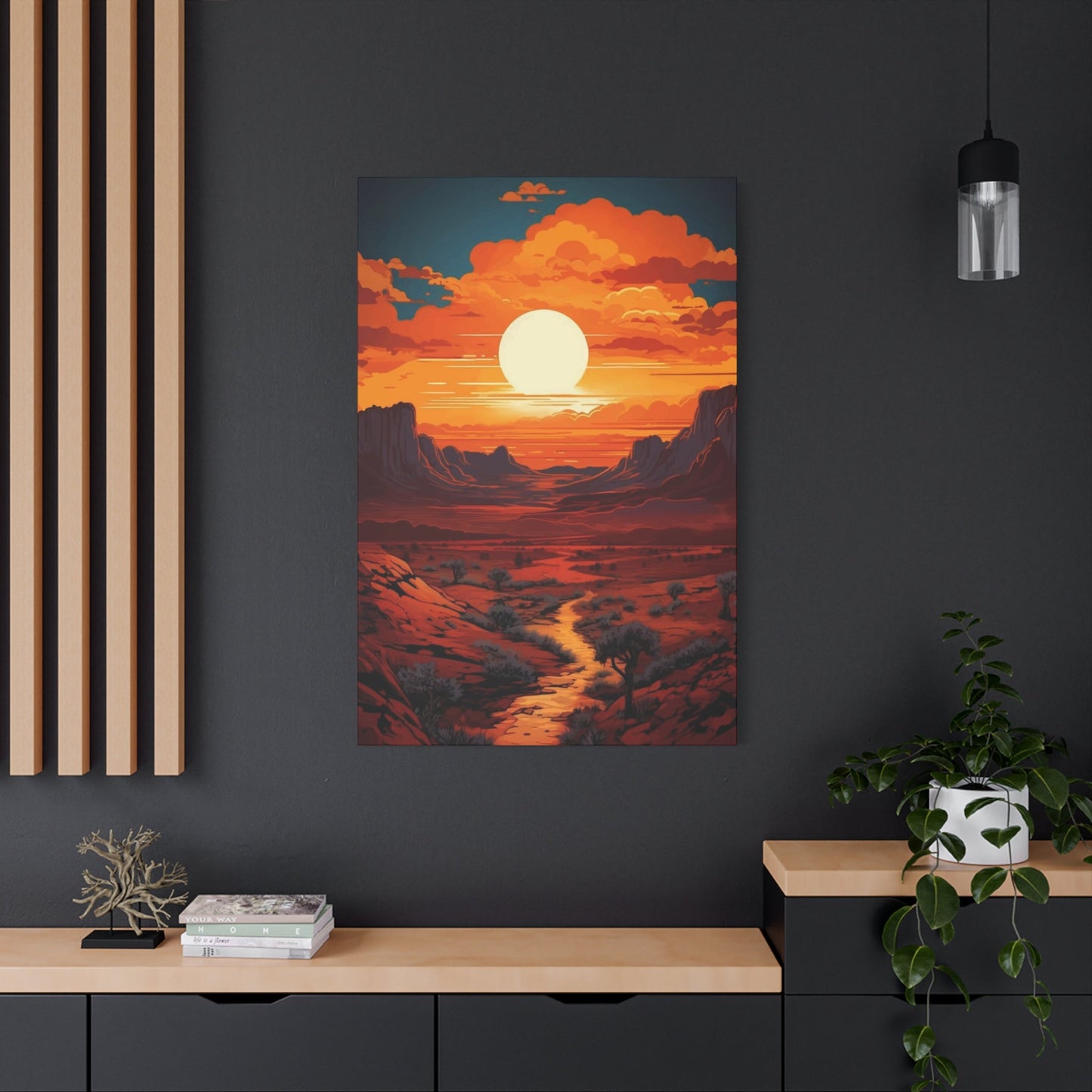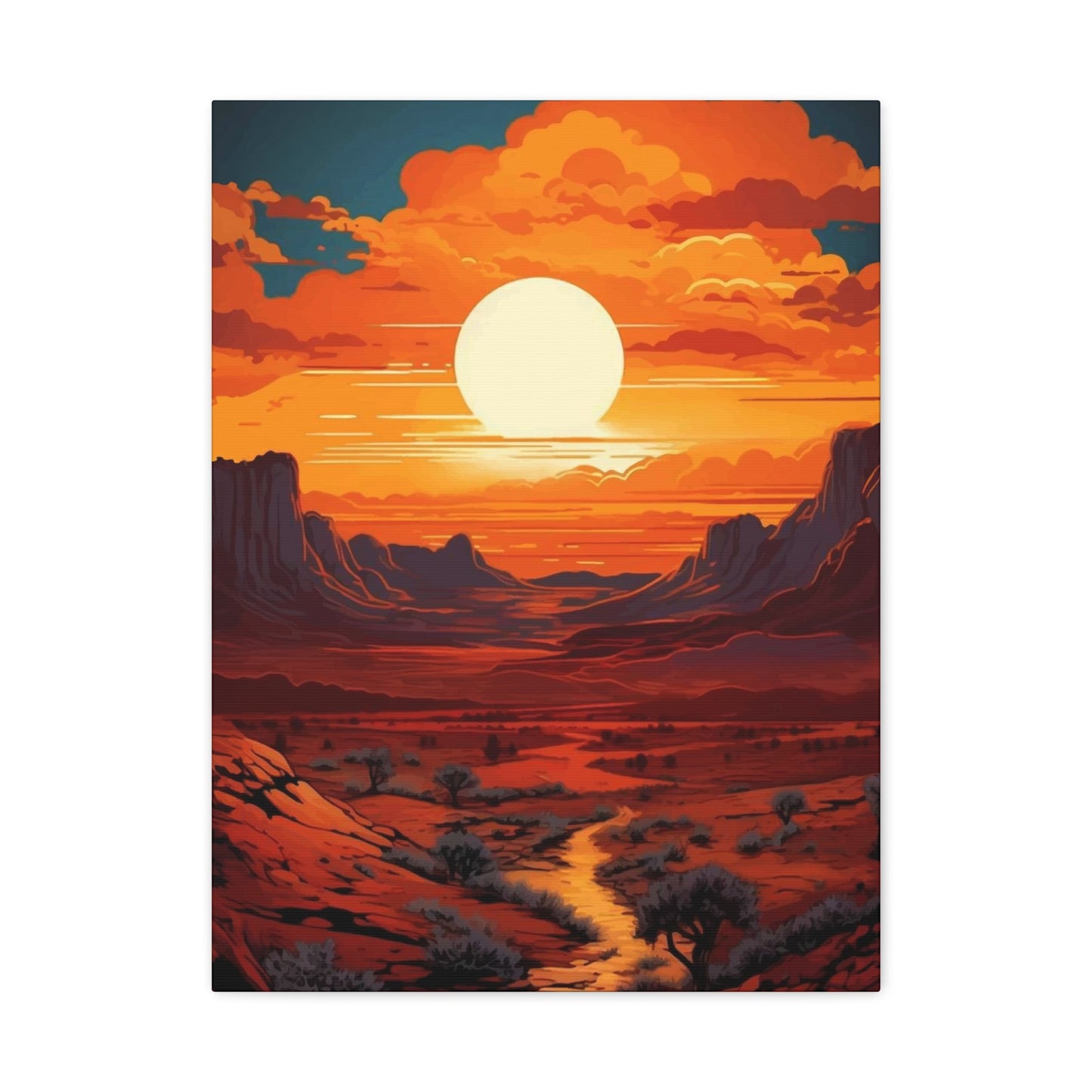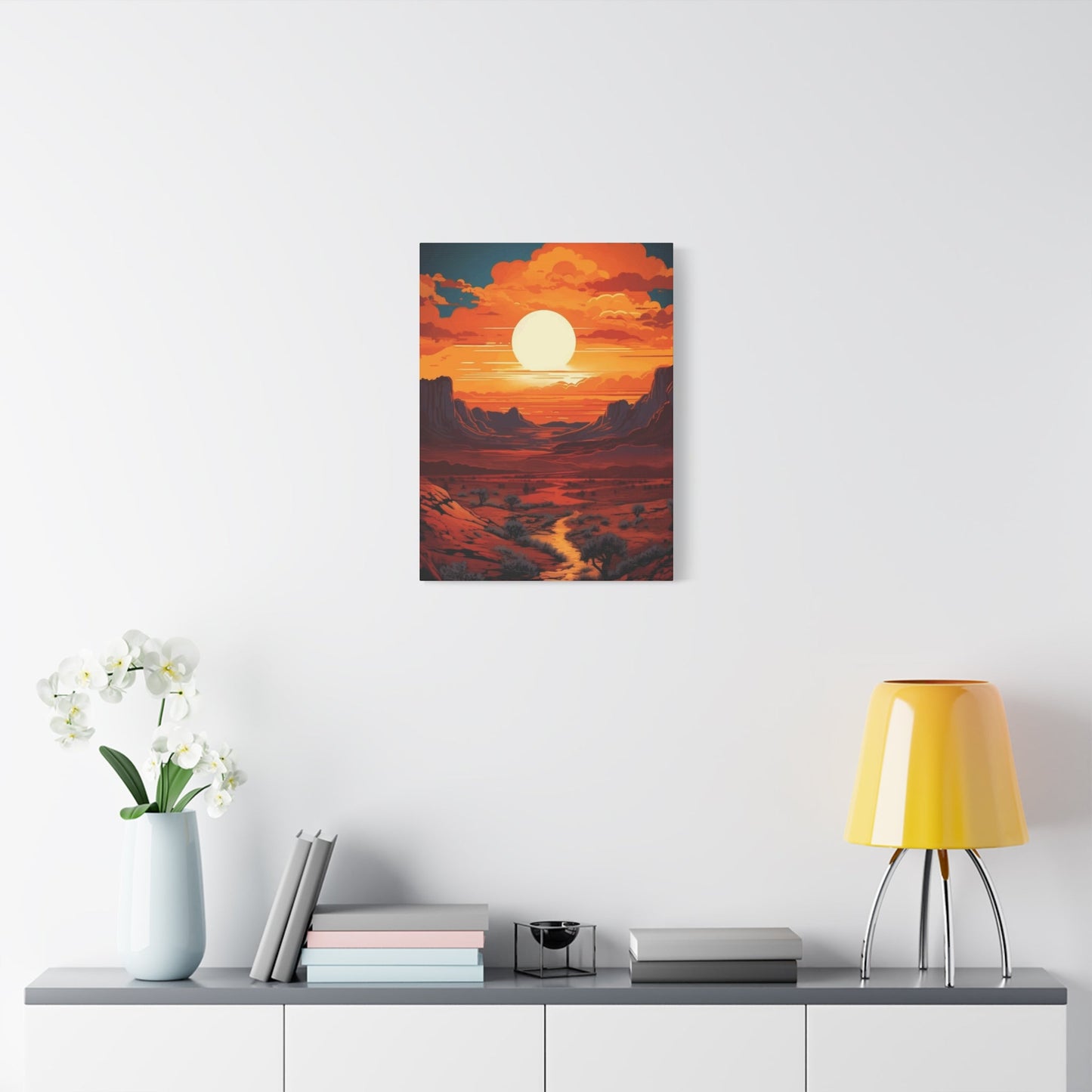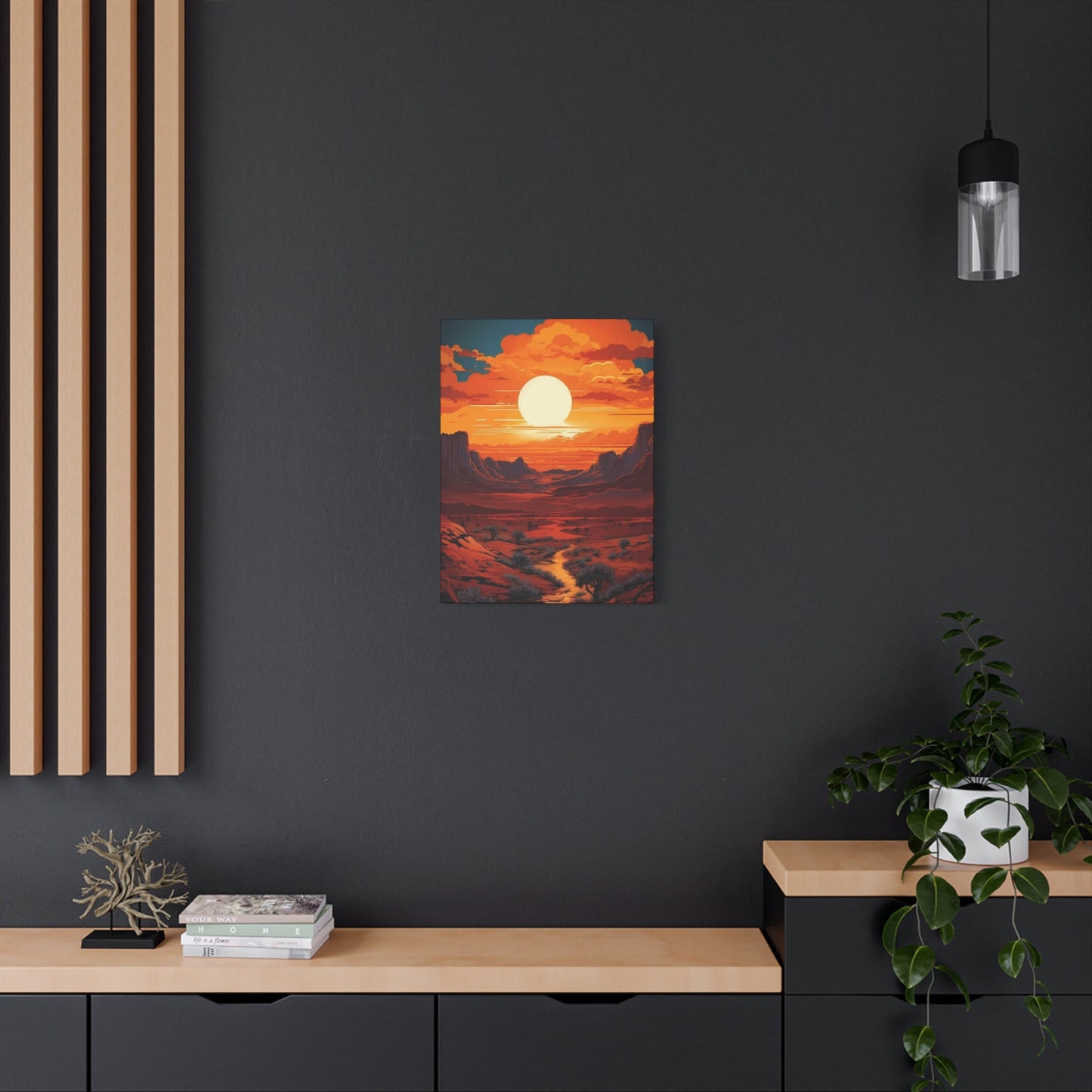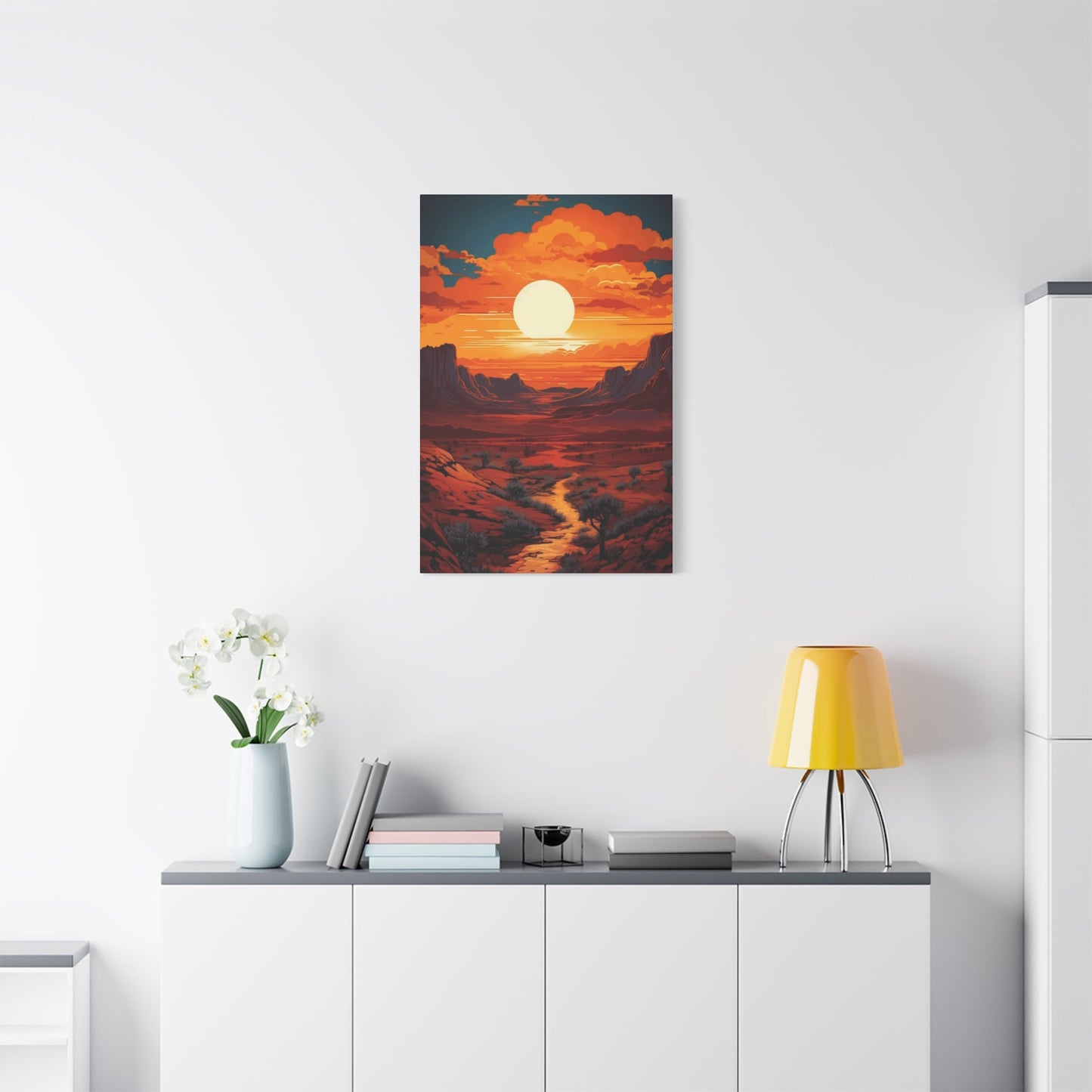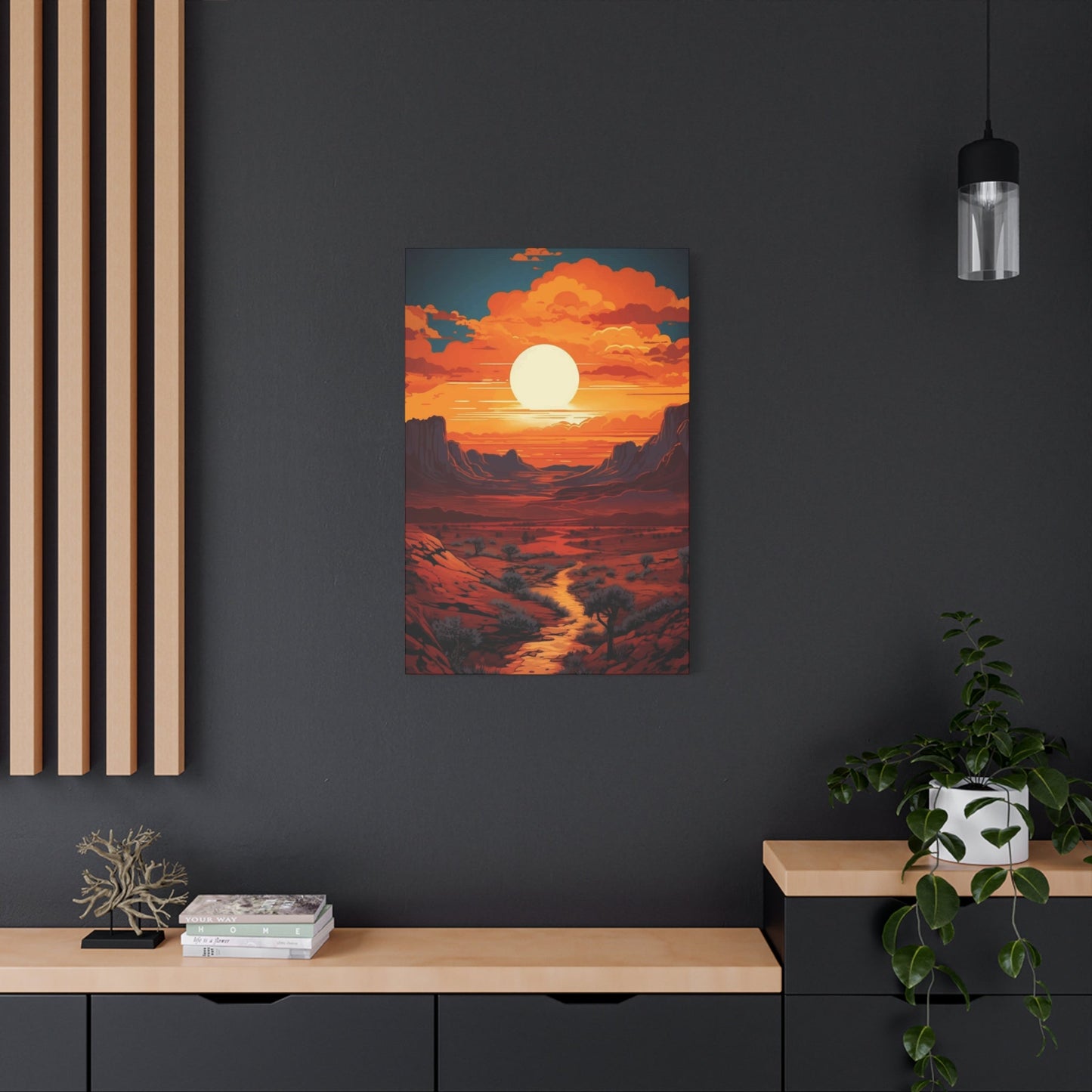Sunset Wall Art: Complete Guide to Choosing and Displaying Evening Sky Masterpieces
The allure of a painted sky at dusk has captivated humanity for centuries, inspiring artists to recreate those fleeting moments when day surrenders to night. Bringing these magnificent scenes into your home through carefully selected pieces can dramatically alter the atmosphere of any room, infusing it with warmth, tranquility, and visual interest. Whether you prefer bold abstract interpretations or meticulously detailed realistic renditions, the right choice can become a conversation starter and a source of daily inspiration. This comprehensive guide explores every aspect of selecting, displaying, and appreciating these captivating pieces, helping you make informed decisions that will enhance your living environment for years to come.
Capturing the Beauty of Sunsets on Canvas
The process of translating a fleeting evening sky onto canvas requires both technical skill and emotional sensitivity. Artists who specialize in these scenes must work quickly when painting from life, as the colors and lighting conditions change rapidly during the golden hour. The most successful works capture not just the visual elements but also the feeling of that particular moment, whether it's the peaceful calm of a summer evening or the dramatic intensity of a stormy sunset. Many painters begin with quick sketches and color notes on location, then return to their studios to complete the work, allowing them to refine details while the memory of the scene remains fresh.
Traditional methods involve building up layers of paint, starting with darker undertones and gradually adding lighter, more vibrant hues. This technique creates depth and luminosity that mimics the way light actually behaves in the atmosphere. The artist must understand color theory deeply, knowing how different pigments interact when layered and how to achieve the subtle gradations that make evening skies so mesmerizing. Some painters use glazing techniques, applying thin, transparent layers of color over dried paint to create rich, glowing effects that seem to emanate light from within the canvas.
Contemporary artists have expanded the toolkit available for capturing these scenes, incorporating mixed media elements, textured materials, and unconventional application methods. Some use palette knives to create thick, impasto textures that catch actual light and cast shadows, adding a sculptural quality to the work. Others incorporate metallic pigments that shimmer and change appearance depending on viewing angle and lighting conditions. Digital artists have also entered the field, creating stunning works using tablets and software that can be printed on canvas with archival inks, offering affordable options without sacrificing visual impact.
The challenge of accurately representing atmospheric perspective, where distant elements appear hazier and bluer, separates amateur attempts from professional works. Skilled artists manipulate color temperature and saturation to create the illusion of vast distances, making viewers feel they could step into the scene. They also understand how to balance the composition, ensuring the horizon line is positioned effectively and that the various elements lead the eye through the painting in a satisfying way. The most compelling works often include silhouetted foreground elements like trees, buildings, or people that provide scale and anchor the viewer in the scene.
Photography has revolutionized how artists approach these subjects, allowing them to capture reference material instantaneously and study it at leisure. However, the best painters don't simply copy photographs but use them as starting points for interpretation. They may enhance colors, simplify complex elements, or combine features from multiple sources to create an idealized version that captures the essence of what makes evening skies so captivating. This interpretive approach results in artwork that feels more emotionally resonant than straightforward photographic reproduction.
The emotional connection between artist and subject matter significantly influences the final result. Painters who have spent years observing and painting evening skies develop an intuitive understanding of their patterns and possibilities. They learn to anticipate how clouds will catch light, how reflections behave on water surfaces, and how colors transition across the dome of the sky. This accumulated knowledge allows them to work with confidence and spontaneity, qualities that show in the finished piece. Collectors often sense this authenticity and are drawn to works that demonstrate genuine passion for the subject.
Warm Color Palettes in Sunset Art
The psychological impact of warm colors makes them particularly effective for creating inviting, comfortable environments. Orange, red, yellow, and their countless variations trigger associations with fire, warmth, and energy, making them natural choices for communal areas where people gather and socialize. These hues have been shown in studies to stimulate conversation and appetite, which is why they're often recommended for dining rooms and kitchens. When incorporated into artwork, they can transform a cold or sterile room into a welcoming retreat that feels lived-in and loved.
Artists working with evening sky themes have access to an incredible range of warm tones, from pale peachy pinks to deep burnt siennas and burgundies. The most successful pieces often feature careful gradations that move seamlessly from one color to another, mimicking the natural transitions seen in actual skies. This can be achieved through various techniques including wet-on-wet blending, where colors are mixed directly on the canvas while still wet, or through careful layering of thin glazes. The goal is to create harmonious color relationships that feel natural and unforced, avoiding muddy or discordant combinations.
The color temperature of a piece, whether it leans warmer or cooler overall, dramatically affects its emotional impact. Works dominated by oranges and reds feel energetic and passionate, perfect for stimulating environments where activity and interaction are encouraged. Pieces that incorporate more coral, salmon, and golden tones create a softer, more romantic atmosphere suitable for bedrooms and intimate settings. Understanding these subtle differences helps buyers select works that will support the intended function and feeling of each room in their home.
Complementary colors play a crucial role in making warm tones appear even more vibrant. Many effective sunset pieces incorporate touches of cool blue or purple, creating visual tension that makes the warm colors pop. This principle, based on how the human eye perceives color relationships, adds depth and interest to compositions. The contrast between warm sky and cool shadows, or between fiery clouds and deepening blue of approaching night, creates dynamic energy that keeps the eye engaged and prevents the work from feeling flat or monotonous.
The intensity or saturation of colors significantly impacts the mood of the piece. Highly saturated, vivid warm tones create excitement and drama, commanding attention and serving as focal points in any room. More muted or dusty versions of these same hues feel sophisticated and subdued, working well in refined settings where the artwork should enhance rather than dominate. Artists skilled in color manipulation can create works that span this spectrum, offering options for every taste and decorating style. Some pieces even incorporate both approaches, using intense color in key areas while keeping surrounding tones more restrained.
Cultural associations with warm colors vary globally but generally trend positive in Western contexts. Orange is associated with creativity and enthusiasm, making it popular for home offices and studios. Red symbolizes passion and energy but can be overwhelming in large doses, so many successful pieces use it sparingly as an accent. Yellow brings feelings of happiness and optimism, though it requires careful handling to avoid appearing garish. Skilled artists balance these colors intuitively, creating works that feel emotionally satisfying without triggering negative associations.
The physical properties of pigments also influence how warm colors appear in finished works. Some reds tend toward orange, others toward purple, and these subtle differences affect how they interact with surrounding colors. Transparent pigments allow underlying layers to show through, creating depth and complexity, while opaque pigments sit on the surface with solid, confident presence. Professional artists select their materials carefully, understanding how each pigment will behave and age over time. This technical knowledge, combined with aesthetic sensibility, results in works that maintain their visual impact for decades.
Abstract vs Realistic Sunset Paintings
The debate between abstract and representational art has energized the art world for over a century, and sunset paintings exemplify this tension beautifully. Realistic interpretations aim to capture the scene with photographic accuracy, depicting clouds, water, landscape features, and atmospheric effects with meticulous attention to detail. These works appeal to viewers who appreciate technical skill and the ability to recognize and relate to depicted scenes. They offer the satisfaction of seeing a familiar experience rendered with expertise, allowing the viewer to vicariously experience the moment the artist witnessed. The best realistic works transcend mere copying, however, revealing the artist's unique vision and emotional response to the subject.
Abstract approaches prioritize color relationships, compositional dynamics, and emotional expression over literal representation. Artists working in this mode might reduce an evening sky to bold horizontal bands of color, or explode it into gestural brushstrokes that capture the energy and movement of the moment without depicting recognizable forms. These pieces engage viewers differently, inviting personal interpretation and emotional response rather than recognition. They can be particularly effective in contemporary settings where clean lines and minimalist aesthetics dominate, as their simplified forms complement modern furnishings and architecture.
The spectrum between these two extremes offers rich territory for exploration. Semi-abstract works retain enough recognizable elements to be identifiable as evening skies while taking liberties with color, proportion, or detail. These pieces often appeal to a broad audience, offering the accessibility of representational art while incorporating the visual excitement and personal expression of abstraction. An artist might paint realistic clouds against a wildly exaggerated color field, or reduce landscape elements to simplified shapes while rendering atmospheric effects with careful attention to natural phenomena.
Choosing between these approaches depends on personal taste, the existing aesthetic of your home, and the intended emotional impact. Realistic works often create a sense of place and can serve as windows to other locations, making them excellent for spaces where you want to evoke specific memories or fantasies of travel. Abstract pieces function more as pure visual experiences, adding color and energy without imposing a particular narrative or location. They can be easier to live with over time, as their ambiguity allows for shifting interpretations based on mood and context.
The technical challenges differ significantly between these approaches. Realistic painting requires strong observational skills, understanding of perspective and anatomy, and the ability to mix colors accurately. Artists must solve problems like how to render the transparency of clouds, the reflection of light on water, or the atmospheric haze of distant mountains. Abstract work, while sometimes dismissed as easier, actually requires sophisticated understanding of composition, color theory, and visual balance. Without the structure provided by recognizable subjects, the artist must rely entirely on formal elements to create works that feel complete and satisfying.
Historical context enriches appreciation of both approaches. The Impressionists revolutionized landscape painting by prioritizing the sensation of light and atmosphere over precise detail, influencing how we see and value evening sky paintings today. Later movements pushed further toward abstraction, with artists like Mark Rothko creating works that evoke the expansive feeling of horizons and atmospheric phenomena without depicting them literally. Understanding this lineage helps viewers appreciate how contemporary artists draw on and respond to these traditions, whether they work in realistic, abstract, or hybrid modes.
Using Sunset Wall Art to Create Mood
The psychological impact of visual stimuli in our living environments cannot be overstated. What we see daily influences our emotional state, energy levels, and even our physical health. Evening sky imagery specifically triggers associations with endings, transitions, and reflection, making it particularly powerful for creating contemplative, peaceful atmospheres. The warm color palette typical of these scenes promotes feelings of comfort and security, tapping into primal responses to the warmth and safety of fire. Strategically placed pieces can transform the emotional tenor of a room, making it more conducive to relaxation, conversation, or whatever function you desire.
Bedrooms benefit enormously from the calming influence of gentle sunset scenes. Works featuring soft, pastel tones in pinks, peaches, and lavenders promote the wind-down process necessary for quality sleep. Avoid intensely dramatic or highly saturated pieces in sleeping areas, as these can be stimulating rather than soothing. Instead, look for works with horizontal compositions that reinforce a sense of restfulness and stability. The subject matter itself carries symbolic weight, representing the day's end and the transition into night, subtly encouraging the body and mind to embrace rest.
Living rooms and gathering areas can accommodate more dramatic interpretations, as these locations serve different purposes. Here, vibrant sunset scenes can energize the environment, stimulate conversation, and create a welcoming atmosphere for guests. The key is balancing the intensity of the artwork with other elements in the room to avoid overwhelming the senses. A large, bold piece can serve as the room's focal point, with other decorative elements kept more neutral to let the artwork shine. Alternatively, a series of smaller, related works can be arranged to create visual interest without dominating.
Home offices and creative workrooms present unique opportunities for strategic art placement. Sunset scenes can provide much-needed visual breaks during long work sessions, offering the eyes a place to rest and the mind an escape from screen fatigue. The optimistic, forward-looking quality of these images can boost motivation and creativity, particularly during afternoon energy slumps. Position the artwork where it's easily visible from your work position but doesn't create distracting reflections on computer screens. The right piece can serve as a daily reminder of life beyond work, helping maintain healthy boundaries and perspective.
Dining areas benefit from the appetite-stimulating properties of warm sunset colors. These hues create an inviting atmosphere that encourages lingering over meals and enjoying the company of others. In restaurants, designers have long understood that warm colors increase comfort and encourage patrons to stay longer, and the same principles apply in home dining rooms. Choose pieces that complement your table and chair finishes, and consider how the colors will interact with candlelight during evening meals. The artwork should enhance the dining experience without competing with the food for visual attention.
Entryways and hallways offer opportunities to make strong first impressions with sunset artwork. These transitional areas can handle bolder choices since people typically don't linger in them for extended periods. A striking evening sky piece immediately sets a tone of warmth and welcome, telling guests something about your taste and personality before they even enter the main living areas. In hallways, a series of related sunset works can create a gallery effect, turning an otherwise neglected passage into an experience worth taking slowly.
Bathrooms, often overlooked in decorating schemes, can become personal retreats with the addition of appropriate artwork. Sunset scenes reinforce the bathroom's role as a place for unwinding and self-care. Choose works that can tolerate humidity, or ensure they're positioned away from direct exposure to steam from showers and baths. The meditative quality of watching an actual sunset translates beautifully to artwork, supporting the relaxation and renewal that bathrooms should provide. Smaller works often function better in these more intimate settings, creating a sense of discovery rather than overwhelming the limited visual field.
Small vs Large Sunset Prints for Walls
Determining the appropriate size for artwork involves more than measuring available surface and picking something that fits. Scale relationships between furniture, architectural features, and art dramatically affect how a room feels and functions. An undersized piece above a large sofa appears lost and tentative, failing to anchor the seating area or provide adequate visual weight. Conversely, an oversized work in a small room can feel oppressive and overwhelming, dominating the environment rather than enhancing it. The goal is to find a balance that feels intentional and harmonious, supporting the room's proportions and purpose.
Large-scale sunset pieces make powerful statements, serving as undeniable focal points that immediately draw attention. These works, typically 36 inches or larger in any dimension, work best in spacious rooms with high ceilings where they have breathing room. They can transform blank walls into windows onto imagined vistas, creating the illusion of expanded dimensions. The immersive quality of large works allows viewers to feel enveloped by the scene, experiencing the colors and mood more intensely than smaller pieces permit. In minimalist interiors with limited decorative elements, a single large sunset piece can provide all the personality and warmth the room needs.
The viewing distance available in a room should inform size choices. A piece intended to be seen primarily from across the room can be larger and bolder, with less concern for fine details. Artwork positioned where viewers will approach closely benefits from tighter, more detailed execution that rewards close inspection. This practical consideration often gets overlooked but significantly impacts the daily experience of living with art. Consider the typical sight lines and movement patterns in the room, choosing sizes that work from all the angles and distances people will actually experience.
Small sunset prints offer flexibility and economy, allowing for creative grouping arrangements that larger pieces cannot achieve. A collection of smaller works can be arranged gallery-style, creating a dynamic composition that evolves over time as pieces are added, removed, or repositioned. This approach works particularly well for beginning collectors who want to develop their collection gradually, or for those who enjoy refreshing their décor regularly. Smaller pieces also make sense in rooms with multiple focal points, where a large work might compete with architectural features, windows, or furniture arrangements.
Budget considerations often drive size decisions, as larger works typically command higher prices due to material costs and the perception of value attached to scale. However, smaller pieces by sought-after artists may cost more than larger works by lesser-known creators. Quality should always take precedence over size when working within financial constraints. A beautifully executed small piece will provide more satisfaction and hold value better than a mediocre large one purchased solely for its dimensions. Build your collection thoughtfully, prioritizing works that truly speak to you regardless of size.
Architectural features like fireplaces, built-in shelving, and windows create natural zones that influence artwork placement and sizing. A piece hung above a fireplace should relate to the mantel width, typically measuring between two-thirds and three-quarters of the mantel length for balanced proportions. In rooms with multiple windows, artwork often works best on the solid wall sections between or beside openings rather than competing with natural light and views. Crown molding, chair rails, and other trim elements create visual lines that can guide artwork placement and sizing, helping integrate pieces into the existing architecture.
The mood and energy you want to create should also inform size decisions. Large-scale works make bold, confident statements about taste and personality, commanding attention and respect. They work well for those who want their art to be a primary conversation topic and design element. Smaller pieces create more intimate, personal relationships with viewers, inviting closer approach and contemplation. They suit collectors who prefer understated elegance or who want to create layered, collected-over-time looks rather than designer-perfect installations. Consider whether you want your sunset artwork to announce itself immediately or reveal itself gradually to those who take time to notice.
Caring for Sunset Canvas Artwork
Proper maintenance ensures your investment retains its beauty and value for generations. Canvas works are remarkably durable when treated correctly but can suffer damage from preventable environmental factors. The primary threats include direct sunlight, humidity fluctuations, physical trauma, and accumulation of dust and pollutants. Understanding these risks and implementing simple protective measures will keep your pieces looking fresh and vibrant with minimal ongoing effort. The initial placement decision may be the most important care choice you make, as relocating large works later can be challenging.
UV radiation from sunlight causes the most common and devastating damage to artwork, fading colors and degrading materials over time. This process occurs gradually and irreversibly, robbing pieces of their vibrancy and impact. Never hang valuable artwork where direct sunlight strikes it, even for brief periods daily. North-facing walls receive the least direct sun in the northern hemisphere, making them ideal for light-sensitive pieces. If your desired location receives significant natural light, consider UV-filtering window treatments or glazing for framed works. Museum-quality UV-filtering glass or acrylic blocks up to 99% of harmful radiation while maintaining visual clarity.
Humidity control prevents multiple problems including mold growth, canvas warping, and paint degradation. Canvas naturally expands and contracts with humidity changes, and extreme or rapid fluctuations can crack paint layers or cause stretching and sagging. Maintain relative humidity between 40-50% year-round for optimal preservation. In dry climates or during winter when heating systems reduce indoor humidity, use humidifiers to prevent excessive dryness. In humid climates or during summer, dehumidifiers protect against excess moisture. Avoid hanging artwork on exterior walls in humid climates, as these surfaces often remain cooler than interior walls, promoting condensation.
Temperature stability matters almost as much as humidity control. Avoid placing artwork near heating vents, fireplaces, radiators, or air conditioning units where temperature fluctuations are most extreme. These changes stress materials and accelerate aging. Attics and basements, while tempting for storage, usually experience the most dramatic temperature and humidity swings, making them poor choices for artwork storage. If you must store pieces temporarily, choose climate-controlled interior closets and ensure works are properly wrapped and positioned to prevent physical damage.
Dust accumulation, while less dramatic than other threats, gradually dulls surfaces and can harbor mold spores and pollutants that damage paint and canvas over time. Clean your artwork regularly using soft, natural-bristle brushes or microfiber cloths designed for delicate surfaces. Work gently from top to bottom, allowing dust to fall away rather than rubbing it into the surface. Never use cleaning solutions, water, or commercial dusting products on unvarnished paintings, as these can cause irreparable damage. For glazed or framed works, clean the glass or acrylic with appropriate cleaners, keeping moisture away from edges where it might seep behind protective barriers.
Professional conservation should be considered for valuable pieces showing signs of damage or for routine maintenance of important works. Conservators can clean, restore, and preserve artwork using specialized knowledge and materials unavailable to amateurs. They can address issues like cracking, flaking paint, torn canvas, and fading through carefully researched interventions. For significant pieces, consider having them evaluated every decade or so, even if no obvious problems exist. Conservators can identify developing issues before they become serious and recommend preventive measures tailored to your specific works and environment.
Insurance provides financial protection for valuable collections but requires documentation and periodic reappraisal. Photograph your artwork thoroughly, including details of signatures, condition issues, and distinctive features. Keep purchase receipts, certificates of authenticity, and appraisals in secure, accessible locations. Many homeowner policies include limited coverage for art, but serious collectors should investigate specialized art insurance policies that offer broader protection including coverage during transit, while on loan, and for conservation costs. Understanding your coverage prevents unpleasant surprises if loss or damage occurs.
Framing Ideas for Sunset Wall Art
The frame significantly influences how artwork is perceived, either enhancing its impact or diminishing its effectiveness. This secondary element should support and complement the piece without competing for attention or imposing conflicting aesthetic messages. The right frame creates a transition between the artwork and its surroundings, helping integrate the piece into your décor while protecting and presenting it optimally. With countless options available in materials, colors, profiles, and styles, the selection process can feel overwhelming, but understanding a few key principles simplifies decision-making and ensures satisfying results.
Traditional gilded frames in warm gold tones naturally complement sunset imagery, creating cohesive color stories that feel intentional and harmonious. These frames, particularly those with ornate detailing, suit realistic paintings and classical interior styles. The gold picks up the warm tones in the artwork while adding a sense of richness and importance. However, gilded frames require careful consideration of scale, as their visual weight can overwhelm smaller works or appear out of place in contemporary settings. Reserve heavily ornamented gold frames for substantial pieces in traditional, transitional, or eclectic interiors where they'll feel at home.
Simple wood frames in natural finishes offer versatile options that work across many decorating styles. Light woods like maple, ash, or oak feel fresh and contemporary, while darker options like walnut provide sophistication and contrast that makes colors pop. Wood grain adds organic texture that complements landscape imagery, creating connections between subject matter and presentation. Consider how the wood tone relates to existing furniture and flooring, choosing frames that coordinate without necessarily matching exactly. A slight contrast often looks more intentional than perfect matching, which can feel too coordinated.
Black frames provide dramatic contrast that makes colors appear more vibrant and saturated, an effect that works beautifully with sunset imagery. The crisp, modern look of black frames suits contemporary and minimalist interiors while remaining versatile enough for traditional settings when the profile is appropriately detailed. Matte black feels more contemporary and artistic, while glossy black adds formality and polish. Width matters significantly with black frames, as narrow profiles create clean, gallery-like presentations while wider versions make bolder statements and provide more visual weight for larger pieces.
White and off-white frames create airy, light presentations that recede visually, allowing the artwork to take center stage. These frames work particularly well with pieces featuring pastel sunset tones, maintaining the softness and romance of the colors. In rooms with white or light-colored walls, matching the frame to the wall color creates a floating effect, with the artwork appearing to hover independently. This technique works best with pieces featuring strong internal composition, as the lack of frame definition provides minimal structural support. Consider how white frames will show dust and fingerprints, particularly in high-traffic areas.
Matting, when used with framed prints, provides breathing room between the artwork and frame while offering opportunities for creative color coordination. Neutral mats in white, cream, or light gray are failsafe choices that work with any color scheme. However, colored mats that pick up minor tones from the artwork can create sophisticated presentations that enhance color relationships. A mat that matches the deepest blue in an evening sky can intensify the warm tones by providing complementary contrast. Multiple mats in coordinating colors add depth and formality, elevating simple prints to gallery-quality presentations.
Float mounting, where artwork is mounted to backing board with spacers creating a gap between the piece and mat or frame backing, adds contemporary sophistication. This technique works particularly well with canvas or thick paper prints, showcasing the dimensional quality of the work. The shadow created by the floating effect adds depth and draws attention to the piece's physical presence. Float mounting typically increases framing costs but creates a distinctive, professional look that justifies the investment for special pieces.
Metal frames in brushed silver, bronze, or copper offer modern alternatives to traditional wood options. These frames suit contemporary artwork and interiors, providing clean lines and subtle color that doesn't compete with the artwork. Metal frames are particularly effective with abstract or minimalist sunset interpretations, reinforcing the modern aesthetic. They're also extremely durable and maintain their appearance with minimal maintenance, making them practical choices for high-traffic or casual settings. The thin profiles typical of metal frames keep the focus on the artwork rather than its presentation.
Popular Themes in Sunset Paintings
Ocean and coastal sunset scenes dominate the market, combining the universal appeal of water with the magic of evening skies. The interaction between fading light and waves creates endless opportunities for capturing movement, reflection, and atmospheric drama. Beach silhouettes featuring palm trees, rocks, or human figures provide scale and narrative interest while maintaining the peaceful essence of seaside relaxation. These works tap into vacation memories and fantasies, offering daily mental escapes to tropical paradises or rugged coastlines. The horizontal lines of ocean horizons naturally suit the landscape-oriented canvases most common in home décor.
Mountain sunset scenes offer different emotional registers, often feeling more dramatic and spiritually uplifting than their ocean counterparts. The way evening light strikes peaks and ridges creates striking patterns of highlight and shadow that artists exploit for maximum visual impact. Alpine glow, where snow-covered mountains take on pink and orange hues in fading light, provides particularly spectacular subject matter. These works appeal to outdoor enthusiasts and those who associate mountains with personal challenge and achievement. The vertical thrust of peaks can provide welcome visual variety in rooms dominated by horizontal lines.
Desert sunsets showcase unique color palettes and stark beauty that differ markedly from more verdant landscapes. The clear, dry air of desert regions often produces especially vibrant sunsets with rich purples and magentas rarely seen in humid climates. Silhouetted cacti, rock formations, and desert vegetation provide distinctive compositional elements that immediately establish location and character. These works bring warmth and exotic flavor to any setting while celebrating the austere beauty of arid landscapes. They particularly suit contemporary interiors where their simplified forms and bold colors complement clean-lined furnishings.
Urban sunset scenes capture the romance of cities at twilight, when artificial lights begin competing with natural illumination. Skyline silhouettes against colorful evening skies create dramatic contrasts between natural and built environments. These works appeal to city dwellers who want to celebrate urban life while bringing color and atmospheric beauty into their homes. The geometric patterns of buildings provide strong compositional structures that balance the organic qualities of clouds and sky. Specific city skylines allow owners to display connections to places they've lived or loved, adding personal meaning beyond pure aesthetics.
Rural and pastoral sunset scenes evoke nostalgia and simpler lifestyles, often featuring farm buildings, fences, country roads, or agricultural fields bathed in golden hour light. These works tap into powerful cultural narratives about connection to land, honest work, and traditional values. They provide counterbalance to urban complexity and technological saturation, offering visual reminders of natural cycles and seasonal rhythms. The warm, glowing quality typical of rural sunset paintings creates particularly welcoming, homey atmospheres suitable for family-oriented living areas.
Wildlife silhouettes against sunset backgrounds combine natural beauty with specific animal subjects that add narrative and emotional content. Birds in flight, deer at forest edges, horses running free, or domestic animals in pastoral settings provide focal points and storytelling elements. These pieces appeal to animal lovers and those who appreciate the interconnection of creatures and their environments. The simplified forms required by backlighting emphasize graceful lines and recognizable shapes, creating graphic impact that works well in contemporary settings while maintaining accessible subject matter.
Tropical paradise scenes featuring palm trees, white sand beaches, and impossibly vivid colors cater to vacation fantasies and desire for escapism. These works lean toward idealization rather than strict realism, amplifying colors and perfecting compositions to create dreamlike versions of actual locations. They serve as daily reminders to embrace leisure and joy, countering the stress and obligations of daily life. While sometimes dismissed as cliché, well-executed tropical sunset paintings bring genuine warmth and optimism to living environments. They work particularly well in casual, comfort-oriented homes where relaxation takes priority over formal sophistication.
Abstract interpretations of evening skies distill the essence of sunset experiences into pure color and form. These works range from simplified geometric compositions to gestural explosions of paint that capture the energy and emotion of the moment without depicting recognizable elements. They suit collectors who prioritize contemporary aesthetics and personal interpretation over literal representation. The ambiguity of abstract works allows them to function in more diverse settings, as their meaning shifts with context and viewer perspective. They provide all the color benefits of sunset imagery without tying the room's aesthetic to any particular location or narrative.
Sunset Art Inspired by Nature
The natural world provides endless inspiration for artists exploring evening sky themes, with each ecosystem and geographic region offering distinctive characteristics. Coastal environments produce particularly dramatic sunsets as light interacts with water vapor, salt particles, and the expansive horizontal vistas that allow unobstructed views of the entire sky dome. Artists working in these locations capture the specific quality of maritime light, the rhythm of waves, and the unique ecosystems of shoreline transition zones. The constant motion of tides and waves adds dynamic energy to compositions, preventing static, postcard-like results.
Forest and woodland sunset scenes present different challenges and opportunities, as trees filter and fragment light in complex patterns. The contrast between illuminated treetops and shadowed understory creates depth and mystery, suggesting rather than fully revealing the landscape. Artists working with these subjects must understand how different tree species and seasonal conditions affect light transmission. Autumn woodland sunsets, with their golden foliage amplifying warm tones, offer particularly rich material. The vertical lines of tree trunks provide compositional structure that balances horizontal sky elements, creating satisfying formal relationships.
Prairie and grassland sunsets showcase the drama of enormous sky volumes above relatively flat terrain. In these environments, clouds become primary subjects, with land serving mainly to establish horizon and scale. The subtle colors and textures of grasses, changing with seasons and lighting conditions, provide foreground interest without competing with sky drama. Artists drawn to these subjects often emphasize the overwhelming scale of nature and the humbling experience of standing small beneath vast heavens. These works suit those who respond to openness and expansiveness rather than enclosed, intimate settings.
Lake and river scenes combine qualities of coastal and inland landscapes, offering water reflections without ocean drama. The mirror-like surfaces of calm inland waters double sunset effects, creating symmetric compositions of extraordinary beauty. Artists can exploit this doubling for formal impact or disturb it with ripples and waves that fragment reflections into abstract patterns. The presence of shoreline vegetation, docks, boats, and wildlife adds narrative possibilities and local character. These works feel more approachable and accessible than ocean scenes, evoking experiences more people have had directly.
Alpine and high-mountain environments produce unique atmospheric effects due to thin air and extreme elevation. The interplay of light on snow, rock, and glacial ice creates color relationships rarely seen at lower elevations. Purple and blue tones tend to dominate shadows, while sunlit areas glow with unusual intensity. Artists working at altitude must understand how atmospheric perspective operates differently in thinner air, where distant objects appear clearer than viewers familiar with lowland landscapes expect. These works convey majesty and often spiritual awe, suitable for those seeking inspirational or contemplative imagery.
Wetland and marsh sunset scenes celebrate subtle beauty often overlooked in favor of more dramatic landscapes. The complex reflections in still water channels, the silhouettes of reeds and water plants, and the presence of waterfowl create layered compositions rich in detail and atmosphere. These environments produce particularly soft, misty evening effects as water vapor diffuses light. Artists attracted to these subjects often emphasize quiet observation and patient attention to small details. The resulting works reward close viewing and create meditative focal points rather than attention-grabbing drama.
Volcanic and geothermal landscapes provide otherworldly backdrops for sunset paintings, with unusual colors and formations that seem almost alien. Steam, mineral deposits, and unique geology create settings unlike typical natural subjects. Artists working with these themes often emphasize the raw power of geological forces and the thin line between beauty and danger. These works appeal to collectors seeking the unusual and exotic, those fascinated by natural science, or people who have visited these remarkable locations and want to preserve memories of the experience.
Arctic and polar sunset scenes capture the unique quality of light in high latitudes, where the sun's low angle creates extended golden hours and colors rarely seen elsewhere. The simplicity of these landscapes, with minimal vegetation and bold contrasts between ice, water, and sky, produces powerful minimalist compositions. Artists must convey the specific clarity and coldness of polar air while maintaining the warmth typically associated with evening colors. These works bring dramatic, elemental beauty to living areas, suggesting adventure and wild places beyond everyday experience.
Emotional Impact of Sunset Scenes
The human response to evening skies operates on multiple levels simultaneously, combining biological programming, cultural conditioning, and personal associations. Physiologically, the warm colors of sunset trigger relaxation responses, lowering heart rates and reducing stress markers. These hues signal the day's end, cueing our circadian systems to begin winding down in preparation for sleep. Bringing these colors into living environments through artwork can help maintain healthy sleep-wake cycles, particularly important for people with irregular schedules or those living in environments with limited natural light exposure. The subtle influence of these visual cues supports wellbeing in ways we often don't consciously recognize.
Culturally, sunsets carry rich symbolic weight accumulated across millennia of human experience. They represent endings, transitions, the cycle of birth and death, and the reliable return of natural patterns. Artists tap into these associations, imbuing their work with meaning beyond mere visual pleasure. A sunset painting can serve as a daily reminder of life's impermanence, encouraging mindfulness and present-moment awareness. This contemplative quality makes such pieces valuable additions to meditation areas, therapy offices, and any setting dedicated to reflection and personal growth.
Personal memories and associations add individual layers of meaning that vary from viewer to viewer. A beach sunset might recall a perfect vacation, a marriage proposal, or childhood summers spent by the shore. Mountain evening scenes might evoke hiking accomplishments or camping trips with loved ones. These personal connections make artwork feel uniquely meaningful, transcending its objective qualities. Collectors often select pieces that resonate with their own experiences, creating daily touchstones to formative moments and important relationships. This personal dimension elevates art from mere decoration to meaningful presence.
Conclusion
Sunset wall art offers a breathtaking way to capture the fleeting beauty and emotional depth of evening skies, bringing warmth, tranquility, and inspiration into your living spaces. Whether you prefer vivid, fiery sunsets or soft, pastel-hued twilight scenes, these artworks serve as timeless masterpieces that resonate deeply with viewers and enhance the ambiance of any room.
Throughout this guide, we’ve explored the diverse styles and mediums available—from realistic landscape paintings and photography to abstract interpretations—that allow you to find the perfect sunset art to match your personal taste and décor. Sunset art’s rich color palettes, which range from deep oranges and reds to gentle pinks and purples, create an atmosphere that encourages relaxation and reflection, making it especially well suited for bedrooms, living rooms, or quiet reading nooks.
Choosing the right sunset wall art involves more than just selecting a beautiful image; it’s about considering how the piece complements your existing color schemes, lighting conditions, and room function. Warmer tones can add energy and coziness to social spaces, while softer sunsets can foster calmness and serenity in more intimate areas. Size and framing also play crucial roles in how the artwork interacts with your interior, helping to create either a bold focal point or a subtle accent.
Displaying sunset art thoughtfully enhances its impact. Positioning your piece where natural light interacts with the colors can amplify the vibrancy and depth, while pairing the art with complementary décor elements—such as natural wood, neutral textiles, or metallic accents—can create a cohesive, harmonious environment that echoes the sunset’s natural beauty.
Beyond aesthetics, sunset wall art often carries symbolic meaning—representing endings, new beginnings, and the passage of time—which adds an emotional layer to your décor. This symbolism invites viewers to pause, appreciate the present moment, and find peace amidst the rhythms of daily life.
In conclusion, sunset wall art is a versatile and evocative choice for elevating your home’s atmosphere with the magic of the evening sky. By carefully selecting and displaying these masterpieces, you create a space filled with warmth, beauty, and meaningful reflection.













